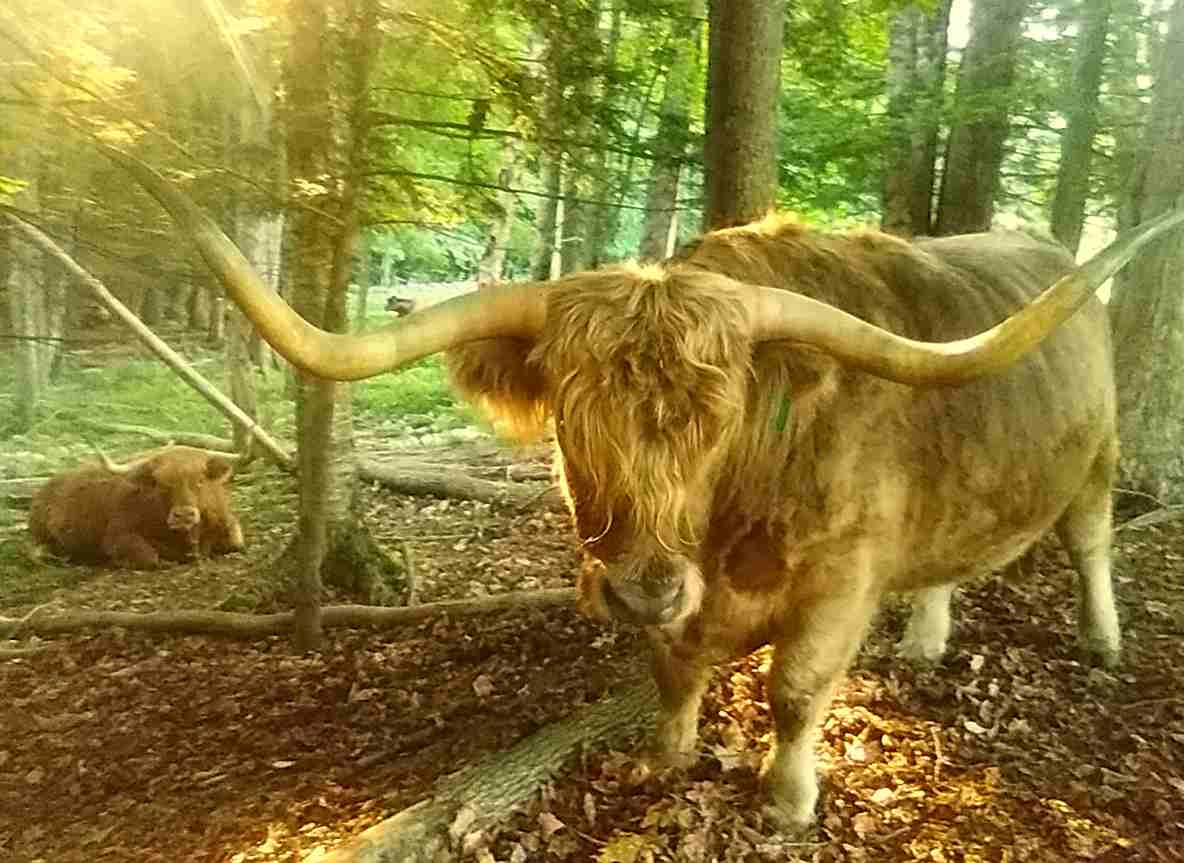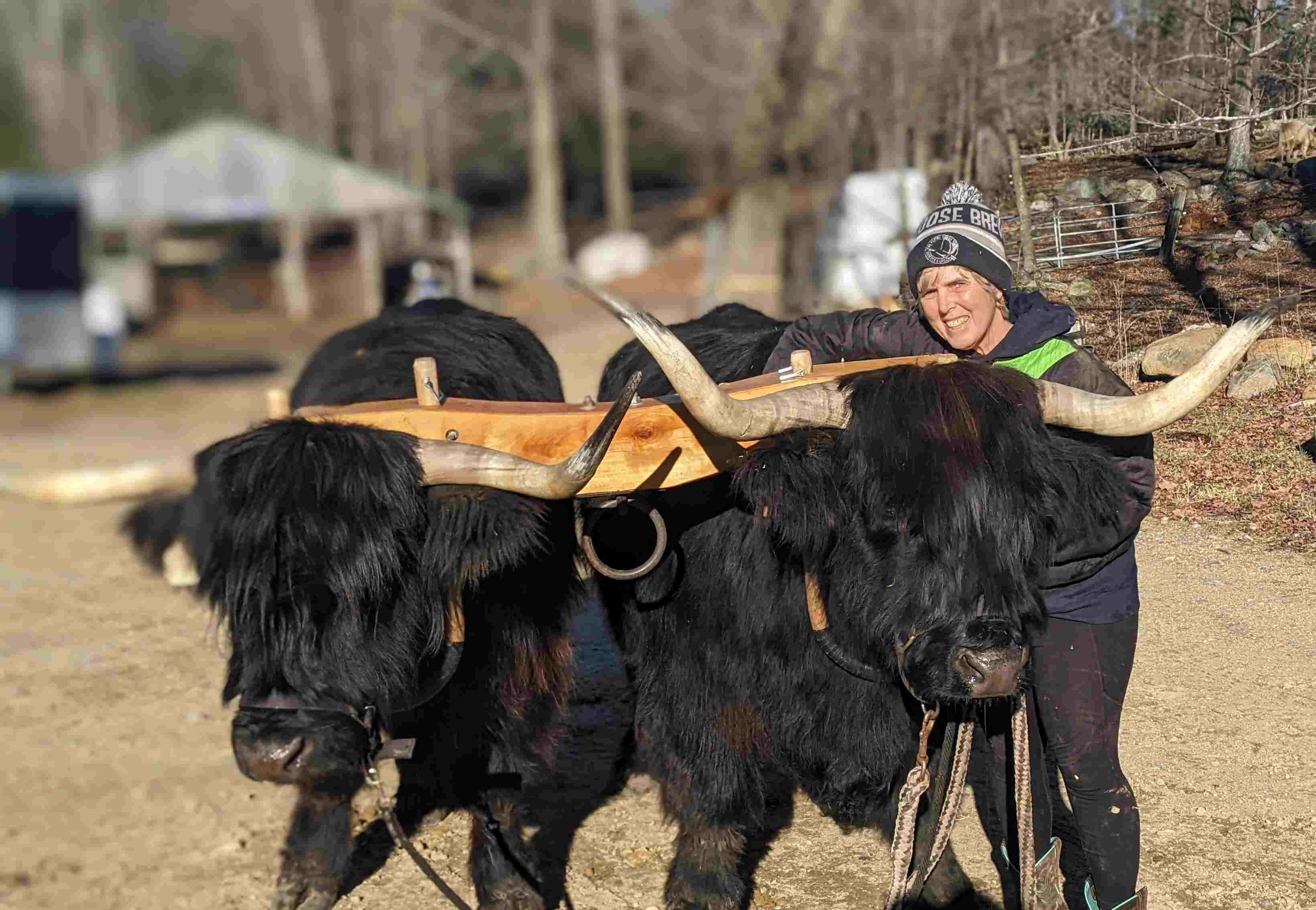Clean Cattle and Green Grass
posted on
July 5, 2021

Curious Bleu (left) and Red, who lead the procession of cattle to a new grazing field, find relief from oppressive heat in an adjoining forest. Cattle are allowed to graze selected pastures, then removed for four to six weeks so the grass can re-grow. Called rotational grazing, this method often provides forage into the winter.
For the past week, my cattle have been eating hay even though it's summer. They'd eaten up the grass at a borrowed pasture in nearby Canterbury, so it was a good time to bring them back to the home farm in Loudon for grooming. Most adult Scottish Highlanders shed their shaggy coats in summer, but not the yearlings. So three of the yearlings, Ted, Hamish, and Murray, sported manure-tangled tails and wore their long hair in mops of matted, twisted cords. Spa treatment was required for these three; a job for my Farm Training 101 class.
The Cow Spa is Open
After we haltered and tied them up, Ted and Murray stood still, heads lolling as students Maggie and Jack, buzzing clippers in hand, took off their hair. The gentle vibration of the clippers lulled the two steers into bliss. Unfortunately, the "fleece" is not suitable for weaving, so we didn't save it.
Hamish, more fractious than the other two, needed restraint. He never took kindly to human control, choosing to fight rather than submit. To stay safe, John and I herded him into the squeeze chute, a tight metal contraption with secure sides and a strong gate. Here Hamish could struggle, but John would be able to clip his hair without being kicked, knocked over, or stepped on.
Fly and Tick Control
After clipping, we applied bug spray, which kills ticks, but its most crucial function is repelling flies. Ticks are annoying to cattle, but flies are worse. Pestered by them, cattle will stop eating and lose weight unless the flying, biting insects are subdued. One application can last a few weeks, so we try to coat them regularly.
There is another, more natural way to control flies. To prosper, flies need nearby hosts to feed upon. Move the cattle away, the flies disappear. The fly larvae laid on the ground have nothing to eat, so they die. That's another reason to move the cattle from pasture to pasture.
The Farm Experience
Relocation came next in the day's maintenance regimen. This time we only had to walk the cattle down the farm lane to a fresh pasture, our Airbnb guests watching the procession. Half of the farmhouse is an inn, which attracts visitors intrigued by farm life. Most Airbnb guests stay with us for the experience of feeding cows, petting a calf, or even shoveling manure! Sometimes they see a birth, oxen in training, or a horse getting its hooves trimmed. Once two women guests helped birth a newborn calf. Another time, two men helped catch turkeys. Farm life provides a variety of opportunities for doing and seeing. These guests got to see a cattle drive.
Happily, the cattle cooperated, following Curious Bleu and Red with me leading them, into the lush pasture where they will stay for a week or two. Then we'll move them to greener pastures. Cattle love summer when the world is their salad bar.



